
Fighting the malaria scourge - Mass Drug Administration recommended
Developers of the anti-malaria artemisinin-based combination therapy, popularly known as ACT, have said the most effective way of eradicating malaria is by employing mass drug administration (MDA).
Advertisement
The anti-malaria vaccine, Artequick, was developed by the Institute of Science and Technology of the Guangzhou University of Chinese Medicine (GUCM), which said its recommendation was not only based on the outcome of a successful project in the Comoros but by the acceptance by the World Health Organisation (WHO) in 2015 of MDA as an effective way of controlling malaria.
For the parasite that causes the most dangerous form of malaria (plasmodium falciparum), the use of two or more drugs with different modes of action is now recommended to provide an adequate cure rate and delay the development of resistance.
ACT is now recommended for the treatment of P. falciparum malaria spread by the Anopheles mosquito.
Source eradication
In a meeting with some African journalists during a visit, the anti-malarial research team of GUCM recommended the fast elimination of malaria by source eradication (FEMSE) through MDA as the surest way of dealing with malaria in Africa.
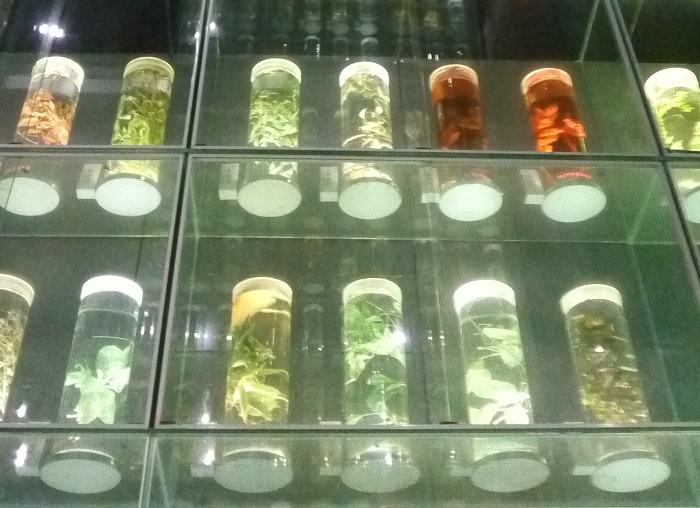
Stacks of preserved plants in the medicine museum.
The journalists visited the GUCM’s science museum, which stocks various preserved fungi, plant and animal species from all over the world known to treat various diseases, including a serum on a snake that is said to cure hypertension and paralysis.
Speaking with the journalists on behalf of the team, the Manager of the university’s scientific park, Dr Deng Changsheng, said; “There are two sources of the malaria parasite – the mosquito and the human being, but it is easier to control the human source but difficult to kill all mosquitoes.”
“The ACT can protect the human in one month. Malaria is a parasitic transmission so if there is no parasite there is no transmission,” he added.
Dr Deng explained that as a pilot in Cambodia and subsequent implementation in the Comoros in 2006 had shown, the world stood a better chance of finally eliminating malaria by adopting the FEMSE with a focus on the human host.
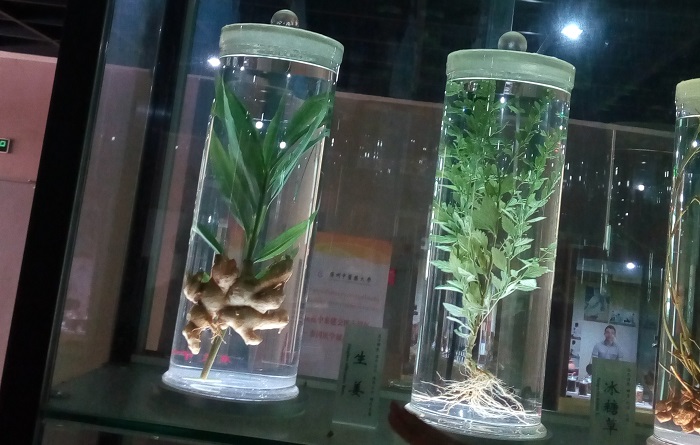
A healing plant in preserved fluid at the museum.
Asked by the Daily Graphic whether MDA could still be effective in dealing with malaria, while insanitary conditions lead to the breeding of more mosquitoes, he replied that employing the strategy also required working with other methods to speed up the process.
He said the FEMSE used in the Comoros cost about US$15 per head in eight years, so it was also cost effective.
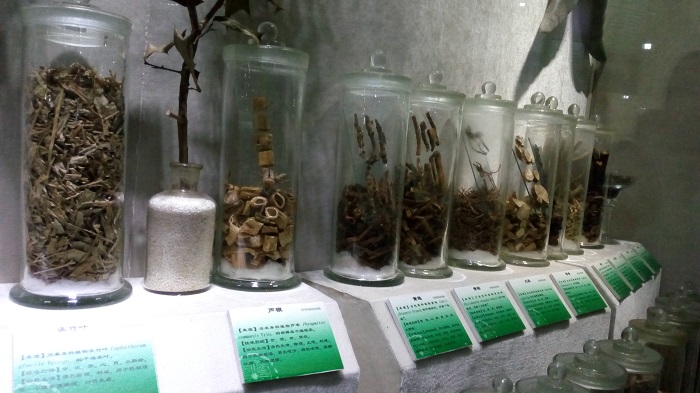
There are also various medicinal herbs on display.
Also quoting a United Nations report, Dr Deng said about five per cent of GDP was used by endemic countries to control malaria each year.
Malaria impact
According to a study on “The economic costs of malaria in children in three sub-Saharan countries: Ghana, Tanzania and Kenya,” published by the Malaria Journal website on September 3, 2013, “Expected values of potential future earnings (in thousands) lost due to premature death of children aged 0–1 and 1–4 years were US$11.8 and US$13.8 in Ghana” in 2009.
It also estimated the total annual costs (in millions) of treatment of malaria in Ghana at US$37.8, which included average treatment costs per case of US$11.99.
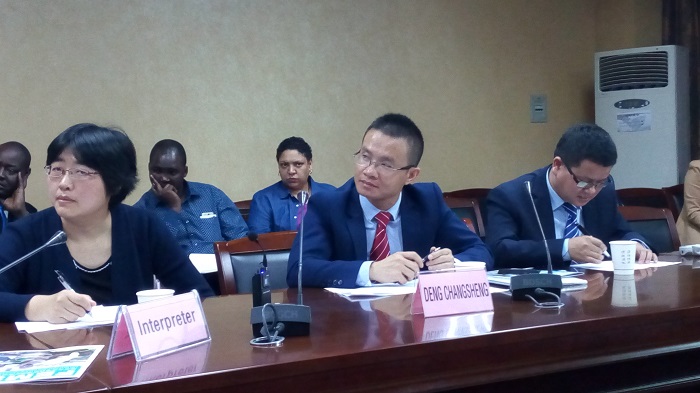
Dr Deng Changsheng (middle) listening to a question from a journalist at the meeting.
A UNICEF 2007 report on Ghana also states that 3.5 million people contract malaria every year, with approximately 20,000 children (25 per cent under the age of five) dying from the disease.
The report states that “even if a child survives, the consequences from severe malaria such as convulsions or brain dysfunction can hamper long-term development and schooling”.
It puts the annual economic burden of malaria on Ghana at between one and two per cent of the country’s GDP.
Mortality rates
According to UNICEF, between 2000 and 2015, the malaria mortality rate fell by 60 per cent and the number of malaria cases also fell by 37 per cent globally, resulting in 6.2 million lives being saved over the last 15 years, out of which 5.7 million were children under five.
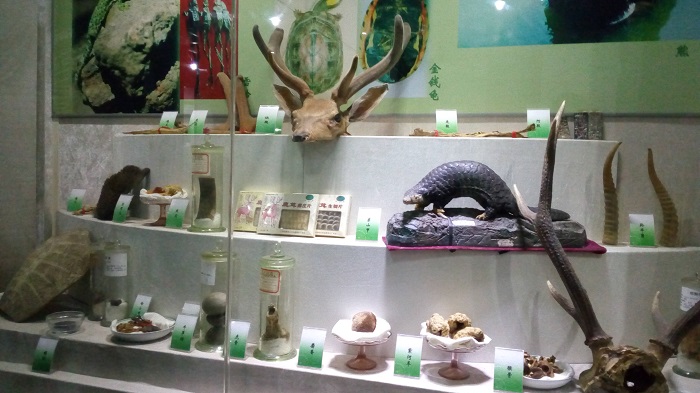
Various animal species that treat diseases are on display.
However, the global body states that “despite tremendous progress, malaria remains an acute public health problem in many regions. In 2015 alone, there were 214 million new cases of malaria reported, and approximately 438,000 people died from this preventable and treatable disease, 70 per cent of whom were children under five. Ninety per cent of malaria deaths occur in Sub-Saharan Africa”.
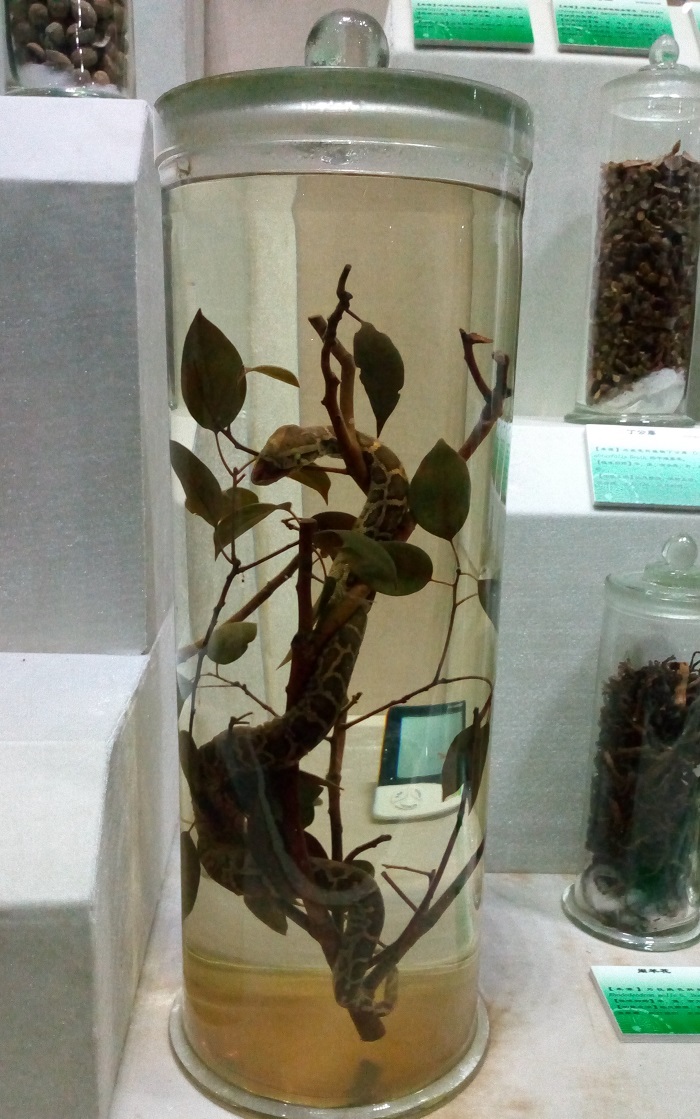 \
\
A snake serum that treats paralysis
“About 3.2 billion people – almost half of the world’s population – are at risk of malaria. The disease also contributes greatly to anaemia among children — a major cause of poor growth and development.”
Writer’s email: [email protected]



